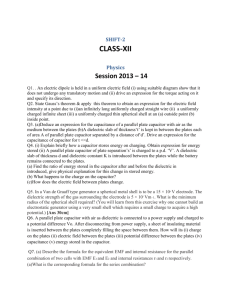Click here to
advertisement
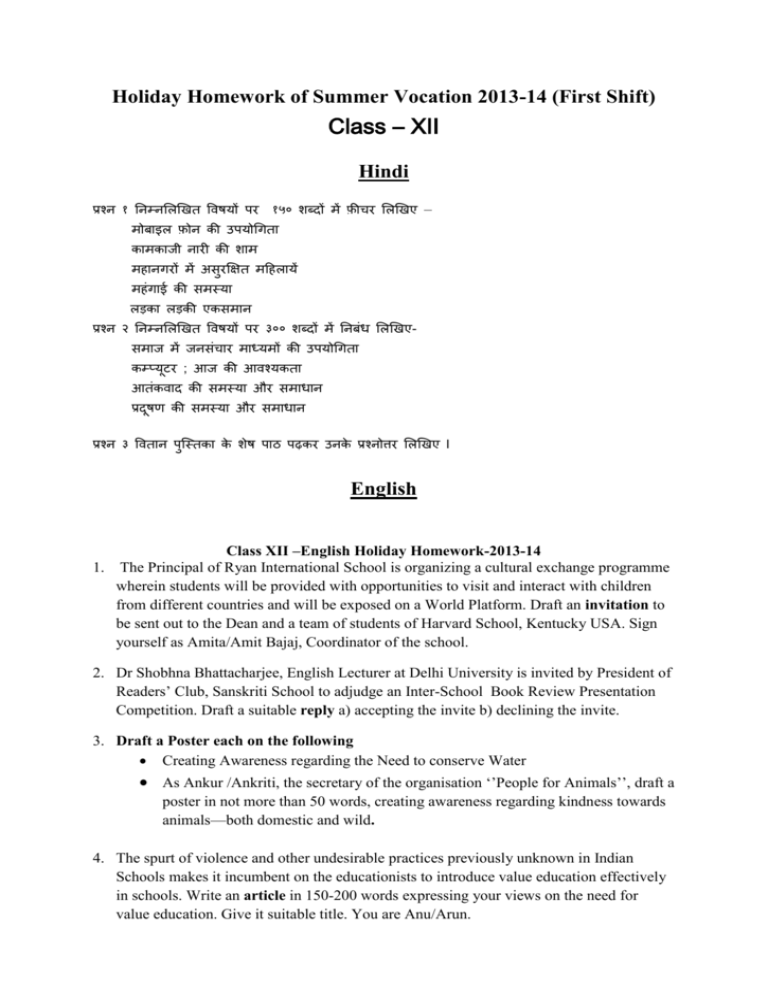
Holiday Homework of Summer Vocation 2013-14 (First Shift) Class – XII Hindi प्रश्न १ ननम्नलिखित विषयों पर १५० शब्दों में फ़ीचर लिखिए – मोबाइि फ़ोन की उपयोगिता कामकाजी नारी की शाम महानिरों में असरु क्षित महहिायें महं िाई की समस्या िड़का िड़की एकसमान प्रश्न २ ननम्नलिखित विषयों पर ३०० शब्दों में ननबंध लिखिएसमाज में जनसंचार माध्यमों की उपयोगिता कम््यट ू र ; आज की आिश्यकता आतंकिाद की समस्या और समाधान प्रदष ू ण की समस्या और समाधान प्रश्न ३ वितान पस्ु स्तका के शेष पाठ पढ़कर उनके प्रश्नोत्तर लिखिए l English Class XII –English Holiday Homework-2013-14 1. The Principal of Ryan International School is organizing a cultural exchange programme wherein students will be provided with opportunities to visit and interact with children from different countries and will be exposed on a World Platform. Draft an invitation to be sent out to the Dean and a team of students of Harvard School, Kentucky USA. Sign yourself as Amita/Amit Bajaj, Coordinator of the school. 2. Dr Shobhna Bhattacharjee, English Lecturer at Delhi University is invited by President of Readers’ Club, Sanskriti School to adjudge an Inter-School Book Review Presentation Competition. Draft a suitable reply a) accepting the invite b) declining the invite. 3. Draft a Poster each on the following Creating Awareness regarding the Need to conserve Water As Ankur /Ankriti, the secretary of the organisation ‘’People for Animals’’, draft a poster in not more than 50 words, creating awareness regarding kindness towards animals—both domestic and wild. 4. The spurt of violence and other undesirable practices previously unknown in Indian Schools makes it incumbent on the educationists to introduce value education effectively in schools. Write an article in 150-200 words expressing your views on the need for value education. Give it suitable title. You are Anu/Arun. 5. Shahid/Aisha has just read a book –Four Ways to Decide Which Career Is Right which talks about a few tips you can follow while choosing a career. She jotted down some point a diary and later, when asked to give a speech on Choosing a Career, he/she decides to use the following notes to write the speech. Make use of the points and Write the speech in 150-200 words. 6. 7. 8. 9. -Know yourself - What do you enjoy the most? - Explore career options based on your interests - Look for options to turn hobbies into careers - Look for options/degrees to enhance skills - Follow Your dreams, not your peers’ Write an article on—Poverty is the Cause of all Social Evils to be published in the Young World of The Hindu. Read the Novel –The Hounds of Baskervilles by Sherlock Holmes with the perspective of answering questions based on plot, theme, character and incidents. Revise all letters and classified ads done in Class XI. Prepare for the First Unit Test Maths Physics Session 2013 – 14 Q1. . An electric dipole is held in a uniform electric field (i) using suitable diagram show that it does not undergo any translatory motion and (ii) drive an expression for the torque acting on it and specify its direction. Q2. State Gauss’s theorem & apply this theorem to obtain an expression for the electric field intensity at a point due to (i)an infinitely long uniformly charged straight wire (ii) a uniformly charged infinite sheet (iii) a uniformly charged thin spherical shell at an (a) outside point (b) inside point. Q3. (a)Deduce an expression for the capacitance of a parallel plate capacitor with air as the medium between the plates (b)A dielectric slab of thickness‘t’ is kept in between the plates each of area A of parallel plate capacitor separated by a distance of‘d’. Drive an expression for the capacitance of capacitor for t <<d. Q4. (i) Explain briefly how a capacitor stores energy on charging. Obtain expression for energy stored (ii) A parallel plate capacitor of plate separation’s’ is charged to a p.d. ‘V’. A dielectric slab of thickness d and dielectric constant K is introduced between the plates while the battery remains connected to the plates. (a) Find the ratio of energy stored in the capacitor after and before the dielectric in introduced, give physical explanation for this change in stored energy. (b) What happens to the charge on the capacitor? (c)How does the electric field between plates change. Q5. In a Van de Graaff type generator a spherical metal shell is to be a 15 × 106 V electrode. The dielectric strength of the gas surrounding the electrode is 5 × 107 Vm–1. What is the minimum radius of the spherical shell required? (You will learn from this exercise why one cannot build an electrostatic generator using a very small shell which requires a small charge to acquire a high potential.) [Ans 30cm] Q6. A parallel plate capacitor with air as dielectric is connected to a power supply and charged to a potential difference Vo. After disconnecting from power supply, a sheet of insulating material is inserted between the plates completely filling the space between them. How will its (i) charge on the plates (ii) electric field between the plates (iii) potential difference between the plates (iv) capacitance (v) energy stored in the capacitor. Q7. (a) Describe the formula for the equivalent EMF and internal resistance for the parallel combination of two cells with EMF E1 and E2and internal resistances r1 and r2 respectively. (a)What is the corresponding formula for the series combination? (b) Two cells of EMF 1V, 2V and internal resistances r2 and r1 respectively are connected in (i) series, (ii) parallel. What should be the external resistance in the circuit so that the current through the resistance be the same in the two cases? In which case more heat is nerated in the cells? Q8. Deduce the condition for balance in a Wheatstone bridge. Using the principle of Wheatstone bridge, describe the method to determine the specific resistance of a wire in the laboratory. Draw the circuit diagram and write the formula used. Write any two precautions. Q9. Describe the principle and construction of potentiometer. Explain how a potentiometer can be used to compare the emfs of two primary cells? Q 10. Draw Circuit diagram for a meter bridge to determine the unknown resistance of a resistor. Obtain the balance condition for a meter bridge. Find the shift in the balance point for a meter bridge when two resistors in its two gaps, are interchanged. Q 11. Are the paths of e’s straight lines between successive collisions in the (i) absence of electric field (ii) presence of electric field. Establish a relation between drift velocity and current. Hence obtain the relation between current density and drift velocity. Q12. With the help of a neat and labeled diagram, explain the underlying principle and working of a moving coil galvanometer. What is the function of (i) uniform radial field (ii) Soft iron core? A: (i) The torque on the coil is same in all positions of coil in the radial magnetic field. This provides a linear current scale. (ii) Due to high permeability of soft iron, the magnetic field line crowd through the soft iron. This increases the magnitude of magnetic field and makes it radial. Hence sensitivity of galvanometer increases. Q13. Derive a mathematical expression for the force per unit length experienced by each of the two long current carrying conductors placed parallel to each other in air. Hence define one ampere of current. Explain why two parallel straight conductors carrying current in the opposite direction kept near each other in air repel. A: Each current carrying conductor produces magnetic field around it. So each conductor experiences a force due to the magnetic field of the other. According to Fleming’s left hand rule, the direction of the force is perpendicular to the two wires and is outwards. Hence the two wires repel each other. Q14. Draw a neat and labeled diagram of a cyclotron. State the underlying principles and explain how a positively charged particle gets accelerated in this machine. Show mathematically that the cyclotron frequency does not depend upon the speed of the particle. Q15. State the Biot-Savart’s law for the magnetic field due to a current carrying element. Use this law to obtain a formula for magnetic field at the center of a circular loop of radius R carrying a steady current I. Sketch the magnetic field lines for a current loop. Q16. (i) Using Biot-Savart’s law, derive the expression for the magnetic field due to a current carrying circular loop of radius R, at a point which is at a distance x from its center along the axis of the loop. (ii) Two small identical circular loops, carrying equal currents are placed with the geometrical axes perpendicular to each other as shown in the figure. Find the magnitude and direction of the net magnetic field produced at the point O. Q17. Using Kirchoff’s laws, calculate the potential difference across the 8 ohm resistor. [Ans : Current through resistance 8= 0.46A, P. d. = 3.68Volts] Q18. E2 =1.02V, PQ=1m.When switch S open, null position is obtained at a distance of 51 cm from P. Calculate (i) potential gradient (ii) emf of the cell E1 (iii) when switch S is closed, will null point move towards P or Q. Give reason for your answer. [Ans: (i) Potential gradient k = 0.02V/cm (ii) emf of the cell E1 = 2V (iii) When switch S is closed, null point is not affected because no current drawn from cell E1 at the null point. ] Q19. In the potentiometer circuit shown, the balance point is at X. State with reason, where the balance point will be shifted when (i) R is increased; (ii) S is increased, keeping R constant. (ii) Cell P is replaced by another cell whose emf is lower than that of cell Q. Q20. Two identical plane metallic surfaces A and B are kept parallel to each other in air separated by a distance of 1 cm as shown in figure. A is given a positive potential of 10V and the outer surface of B is earthed. (i) What is the magnitude and direction of the uniform electric field between Y and Z? (ii) What is the work done in moving a charge of 20 C from X to Y? Ans : (i) E = 1000 V/m, direction from A to B (ii) Zero. Q21. The following data was obtained for the dependence of the magnitude of electric field, with distance, from a reference point O, within the charge distribution in the shaded region. Field Point A B C A’ B’ C’ Magnitude E E/8 E/27 E/2 E/16 E/54 of electric field (i) Identify the charge distribution and justify your answer. (ii) If the potential due to this charge distribution, has a value V at the point A, what is its value at the point A’? Q22. Use Gauss’s law to obtain an expression for the electric field due to an infinitely long straight uniformly charged wire. Electric field in the above figure is directed along + X direction and given by Ex = 5Ax + 2B, where E is in NC-1 and x is in metre, A and B are constants with dimensions Talking A=10NC-1m-1 and B = 5NC-1 calculate. (i) the electric flux through the cube. (ii) net charge enclosed within the cube. [Ans (i ) 0.05Nm2/C (ii) 44.25X10-14C ] Q23. Two point charges of charge values Q and q are placed at distance x and x/2 respectively from a third charge of charge value 4q, all charges being in the same straight line. Calculate the magnitude and nature of charge Q such that the net force experienced by the charge q is zero. [Ans Q = q/4 , +ive ] Q24. How will a dia, para and ferromagnetic material behave when kept in a non-uniform external magnetic field? Name two main characteristics of a ferromagnetic material which helps us to decide its suitability for making (i) a permanent magnet and (ii) an electromagnet. Which of these two characteristic should have a high or low values for each of these two types of magnets? Q25. A short bar magnet placed with its axis inclined at 300 to the external magnetic field of 800 G acting horizontally experiences a torque of 0.016 Nm. Calculate - (i) the magnetic moment of magnet (ii) the work done by an external force in moving it from most stable to most unstable position. (iii) What is the work done by the force due to the external magnetic field in the process mentioned in (ii)? A: (i) m = 0.4 Am2 (ii) Most stable position = 00 and most unstable position = 1800 , W = - mB (cos 180 – cos 0) = 2mB = 0.64J (iii)W = - 0.64J. Q26Total capacitance of the combination between A and B in the given figure is 15μF. Calculate the capacitance of capacitor C. [ Ans. 60 μF] Q27. On charging a parallel plate capacitor to a potential V, the spacing between the plates is halved, and a dielectric medium of r = 10 is introduced between the plates, without disconnecting the d.c source. Explain using suitable expressions, how the (i) capacitance (ii) electric field (iii) energy density of the capacitor change. [Ans(i) C1= 20Co (ii) E 1=2Eo (iii) u1 = 40uo] Chemistry Class- XII Subject- Chemistry Solid State 1. What is the number of atoms per unit cell in a body-centred cubic structure? 2. What is the total number of atoms per unit cell in a face-centred cubic (fcc) structure? 3. Which point defect in crystals of a solid in which density decreases, increases or remainsame? 4. A compound of element X and Y has crystalline nature. The ccp lattice is formed by anions of element Y and cation of element X occupies 2/3 rd of the octahedral voids. What will be the formula of the compound? 5. Account for the following: (a) Glass of old building is milky. (b) Crystalline substances are anisotropic. 6. Explain each of the following with a suitable example: (i) Paramagnetism (ii) Antiferromagnetism (iii) Frenkel defect in crystals (iv) Ferromagnetism (v) Ferrimagnetism (vi) Schottky defect 7. (a) Explain electrical property of substances on the basis of Band Theory. (b) Describe the two main types of semiconductors. 8. How would you account for the following? (i) Frenkel defects are not found in alkali metal halides. (ii) Schottky defects lower the density of related solids. (iii) Impurity doped silicon is a semiconductor. 9. Iron has a body-centred cubic unit cell with a cell edge of 286.65 pm. The density of iron is 7.87 g cm−3. Use this information to calculate Avogadro’s number. (At. Mass of Fe = 56 g mol−1) Solutions 1. State Henry’s law correlating the pressure of a gas and its solubility in a solvent and mention two applications for the law. 2. An antifreeze solution is prepared from 222.6 g of ethylene glycol [C 2H4(OH)2] and 200 g of water. Calculate the molality of the solution. If the density of this solution be 1.072 g mL−1, what will be the molarity of the solution? 3. Calculate the temperature at which a solution containing 54 g of glucose, (C6H12O6), in 250 g of water will freeze.(Kf for water = 1.86 K mol−1 kg) 4. State Raoult’s law for solutions of volatile liquids. Taking suitable examples explain the meaning of positive and negative deviations from Raoult’s law. Why are they caused? 5. Define the term osmotic pressure. Describe how the molecular mass of a substance can be determined by a method based on measurement of osmotic pressure? 6. Differentiate between molality and molarity of a solution. What is the effect of change in temperature of a solution on its molality and molarity? 7. 100 mg of a protein is dissolved in just enough water to make 10.0 mL of solution. If this solution has an osmotic pressure of 13.3 mm Hg at 25°C, what is the molar mass of the protein?(R = 0.0821 L atm mol−1 K−1 and 760 mm Hg = 1 atm) 8.. A solution prepared by dissolving 1.25 g of oil of winter green (methyl salicylate) in 99.0 g of benzene has a boiling point of 80.31 °C. Determine the molar mass of this compound. (B.P. of pure benzene = 80.10 °C and K b for benzene = 2.53 °C kg mol−1) 9. Calculate the freezing point depression expected for 0.0711 m aqueous solution of Na2SO4. If this solution actually freezes at −0.320°C, what would be the value of Van’t Hoff factor? (Kf for water is 1.86 °C mol−1) Electrochemistry 1. Express the relation between conductivity and molar conductivity of a solution. 2. What is primary cell? Give an example. 3. The resistance of a conductivity cell containing 0.001 M KC1 solution at 298 K is 1500Ω. What is the cell constant if the conductivity of 0.001 M KCl solution at 298 K is 0.146×10−3 S cm−1? 4. Predict the products of electrolysis in the following: (i) A solution of H2SO4 with platinum electrodes. (ii) A solution of CuCl2 with Pt electrodes. (iii) A solution of AgNO3 with silver electrode 5.What type of a cell is the lead storage battery? Write the anode and the cathode reactions and the overall reaction occurring in a lead storage battery while operating. 6. Formulate the galvanic cell in which the following reaction takes place: Zn(s) + 2Ag+(aq) Zn2+ (aq) + 2Ag(s) State: (i) Which one of its electrodes is negatively charged. (ii) The reaction taking place at each of its electrode. (iii) The carriers of current within this cell. 7. Corrosion is essentially an electrochemical phenomenon. Explain the reactions occurring during corrosion of iron kept in an open atmosphere. 8. Conductivity of 0.00241 M acetic acid solution is 7.896 × 10 −5 S cm−1. Calculate its molar conductivity in this solution. If for acetic acid be 390.5 S cm2 mol−1, what would be its dissociation constant? 9. Three electrolytic cells A, B and C containing solutions of zinc sulphate, silver nitrate and copper sulphate respectively, are connected in series. A steady current of 1.5 ampere was passed through them until 1.45 g of silver was deposited at the cathode of cell B. How long did the current flow? What mass of copper and what mass of zinc were deposited in the concerned cells? (Atomic masses of Ag = 108, Zn = 65.4, Cu = 63.5) 10.Define molar conductivity of a substance and describe how for weak and strong electrolytes, molar conductivity changes with concentration of solute. How is such change explained? 11. A voltaic cell is set up at 25°C with the following half-cells: Al | Al3+ (0.001 M) and Ni | Ni2+ (0.50 M) Calculate the cell voltage. 13. Calculate the equilibrium constant and Δ rG° for the reaction 14. One half cell in a voltaic cell is constructed from a silver wire dipped in silver nitrate solution of unknown concentration. Its other half-cell consists of a zinc electrode dipping in 1.0 M solution of Zn (NO3)2. A voltage of 1.48 V is measured for this cell. Use this information to calculate the concentration of silver nitrate solution used. 15. (a) State Kohlrausch law of independent migration of ions. Write an expression for the molar conductivity of acetic acid at infinite dilution according to Kohlrausch law. (b) Calcualte Given that for acetic acid. (HCl) = 426 S cm2 mol−1 (NaCl) = 126 S cm2 mol−1 (CH3COONa) = 91 S cm2 mol−1 Chemical Kinetics 1. For the reaction the rate law is expressed as rate = k[Cl2][NO]2. What is the overall order of this reaction? 2. The decomposition of NH3 on platinum surface, is a zero order reaction with k = 2.5 × 10−4 M s−1. What are the rates of production of N2 and H2? 3. Define the term (i) rate of a reaction. (ii) order of reaction 4. A first order decomposition reaction takes 40 minutes for 30% decomposition. Calculate its t½value. 5. What is meant by the ‘rate constant, k’ of a reaction? If the concentration be expressed in mol L−1 units and time in seconds, what would be the units for k (i) for a zero-order reaction and (ii) for a first-order reaction? 6. (a) Derive the general form of the expression for the half-life of a first-order reaction. (b) The decomposition of NH3 on platinum surface is a zero-order reaction. What are the rates of production of N2 and H2 if k = 2.5 × 10−4 mol−1 L s−1? 7.(a) List the factors on which the rate of a chemical reaction depends. (b) The half-life for decay of radioactive 14C is 5730 years. An archaeological artefact containing wood has only 80% of the 14C activity as found in living trees. Calculate the age of the artefact. 8. A reaction is of second order with respect to a reactant. How will the rate of reaction be affected if the concentration of this reactant is (i) Doubled, (ii) Reduced to half? 9. A first-order reaction has a rate constant of 0.0051 min−1. If we begin with 0.10 M concentration of the reactant, what concentration of reactant will remain in the solution after 3 hours? 10. The rate constant for a reaction of zero order in A is 0.0030 mol L −1 s−1. How long will it take for the initial concentration of A to fall from 0.10 M to 0.075 M? 11. A reaction is of first order in reactant A and of second order in reactant Β. How is the rate of this reaction affected when (i) the concentration of B alone is increased to three times (ii) the concentrations of A as well as B are doubled? Biology 1. Draw diagrams of the following- (a) L.S. of a flower (b) T.S of a flower (c) Stages of microspore maturing into a pollen grain (d) View of anatropous ovule (e) Diagrammatic representation of embryo sac (f) L.S. of flower showing growth/pollen tube (g) Monocot & Dicot seed (h) Male reproductive system (man) (i) Female reproductive system (j) T.S. mammalian ovary (k) T.S. mammalian testis (l) Structure of sperm (m) Schematic representation of spermatogenesis & oogenesis (n) Vasectomy & Tubectomy (o) Monohybrid & Dihybrid cross (p) Monohybrid cross in Snapdragon (q) Test Cross (r) Structure of DNA (s) Diagrammatic representation of Hershey & Chase experiment (t) DNA replication 2. Prepare lesson 1-7 for 1st UT 3. Prepare investigatory Project Informatics Practices 1. Create a class with all types of constructors, destructor and two member functions. 2. Explain the swing control of Java. 3. What is DBMS. Explain all types of commands used in DBMS. 4. What is constraint? Explain its types with code. 5. Define DDL. Explain all command with examples. 6. Define DML. Explain all command with examples. 7. Define TCL. Explain all command with examples. 8. What are group functions? Explain its types. Computer Science 1. What is token? Classify its type. 2. Define Iteration Statement. Classify it with example. 3. Define Conditional Statement. Classify it with example. 4. Write the input and output statements for all data types. 5. Write the programme for following. a. To print Fibonacci series. b. To print prime number series. 6. Create a class with all types of constructors, destructor and two member functions. 7. Write a code to explain inline function. 8. Explain the logic for following a. Bubble sort b. Selection sort c. Insertion sort d. Merge sort Accontancy Q1. Solve the following questions of the given chapters from the text book (a) Fundamentals of partnership -> Q65 to 75, 86, 87, 92, 93 & 94 (b) Change in profit sharing ratio among the existing partners -> Q 46, 47, 47, 48, 52 & 56 (c) Admission of a partner -> Q 5 to 90, 110-115, 121-124, 130-135 Q2. Revise first 3 chapters for first unit test. Q3. Arrange an income statement and financial statement of a company. B. Std. Q1. Frame your own question of 1` and 3 marks from first 4 chapters covering each and every topic and also write their answers.(Make atleast three questions from every topic) Q2. Learn all the work done in the class so far. Q3. Prepare first four chapters for the first unit test. Economics CHAPTER – 2 (CONSUMER BEHAVIOU AND DEMAND) (A) Very short type questions 1. How is total utility related to marginal utility? 2. What happens to MU , when the TU starts to fall? 3. State the law of diminishing marginal utility. 4. What is meant by Marginal Utility of one rupee? 5. Define Market demand. 6. When a good is called an inferior good? 7. What is meant by purchasing power of money? 8. Why is price elasticity of demand generally negative? 9. If two demand curves intersect, which one has the higher price elasticity? 10. When is the demand of a commodity said to be inelastic? (B) Short type questions. 1. Mention any three factors affecting price elasticity of demand. 2. State the various methods for measuring price elasticity of demand. Discuss any one. 3. Draw three Demand curve having perfectly elastic demand, unitary elastic demand and perfectly inelastic demand. 4. Explain with the help of a diagram, the effect of the ‘fall in the price of substitute good’ on the demand of a commodity. 5. List the causes of Increase in demand. How will it affect the demand curve of given goods? (C) Long type questions/Numerical 1. Suppose that originally, a product was being sold at Rs. 10 per unit and the quantity demanded was 1000 units. The product price changes to Rs. 14 and, as a result, the quantity demanded changes to 500 units. Calculate the price elasticity of demand. 2. As price of a commodity falls from Rs. 7 per kg. to Rs. 5 per kg., the tatal expenditure on it increases from Rs. 3500 to Rs. 6250. Find out the elasticity of demand. Comment. 3. Abhishek wants to purchase two goods which are available in integer units only. If his income is Rs. 40 and both the goods are priced at Rs. 10 each. Write the bundles which cost exactly Rs. 40. 4. Following is the utility schedule of a good: Units 1 2 3 4 5 MU 40 32 15 10 7 If the commodity is sold for Rs. 5 and MU of one rupee is 2 utils. How many units will Raveena buy to maximize his satisfaction? 5. Explain the consumer equilibrium using Indifference curve analysis. Use diagram. 6. How many ice-cream will Divya have, if ice-cream is available free of cost? Explain with diagram. 7. Delhi Govt. has decided to increase the electricity charges, how will it affect your monthly expenditure on electricity. Explain with keeping in mind the alternative uses of electricity and necessities. Geography 1. Explain the Population Density and Density factors? 2. Explain Demographic transaction? 3. What do you mean by Human Development? Explain Pillars and approaches of Human Development. 4. Explain the major types of agricultures in the world? 5. Complete the Map File. 6. Complete the Practical File. 7. Explain determinism, possibilism and Neo determinism with suitable examples. Political Science Q.1Why did the two superpowers need smaller allies during the Cold War? Define in details. Q.2Identify the princely states marked in the Indian map, Mention the major problem faced in the integration of any one of these states into the Indian union. Q.3 POLITICAL PARTIES AND DEMOCRATIC GOVERNANCE: A CASE STUDY OF PARTY FORMATION IN INDIA SINCE 1950. Q.4 Make a power point Presentation on Cold war era and Post Cold war era. Q.5 Make Project on Parliamentary Presidential form of government (define its merits demerits) and make a list of the countries of the world which type of governments countries are having’. Q.6What was Shock Therapy? Was this the best way to make a transition from communism to capitalism? Q.7 Draw a map and how many counties were having Communist form of government and how many countries were having Democratic government.
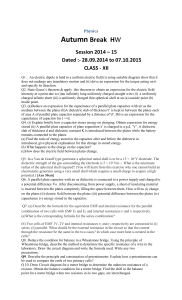
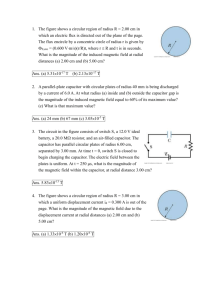
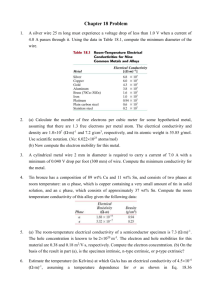
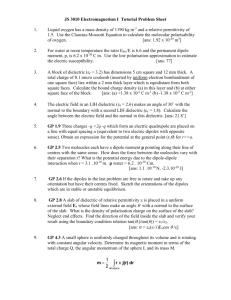
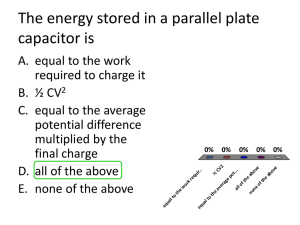
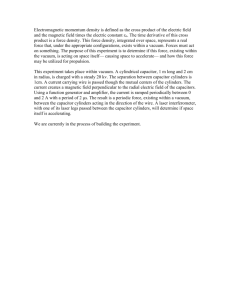
![Sample_hold[1]](http://s2.studylib.net/store/data/005360237_1-66a09447be9ffd6ace4f3f67c2fef5c7-300x300.png)
